I’ve been following the current drought in West Devon and Cornwall for many months. I was interviewed on the subject by the BBC in March, and by the Daily Telegraph in June. I took this photograph of Roadford Lake on June 1st:
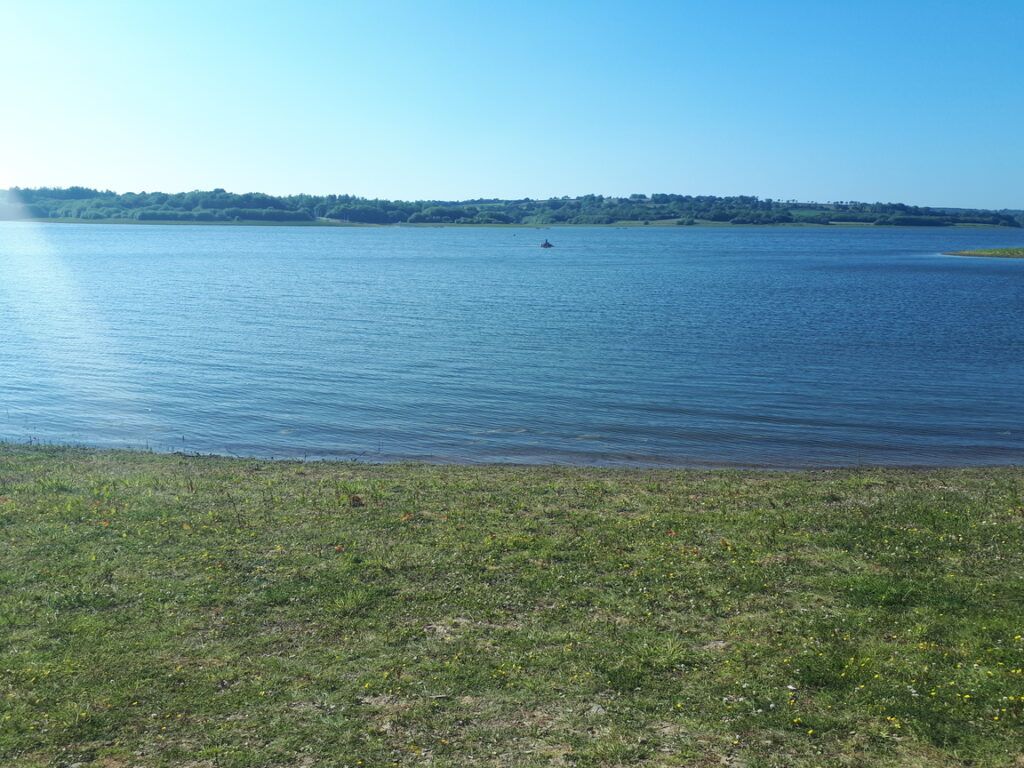
and this one on June 24th for comparison purposes:
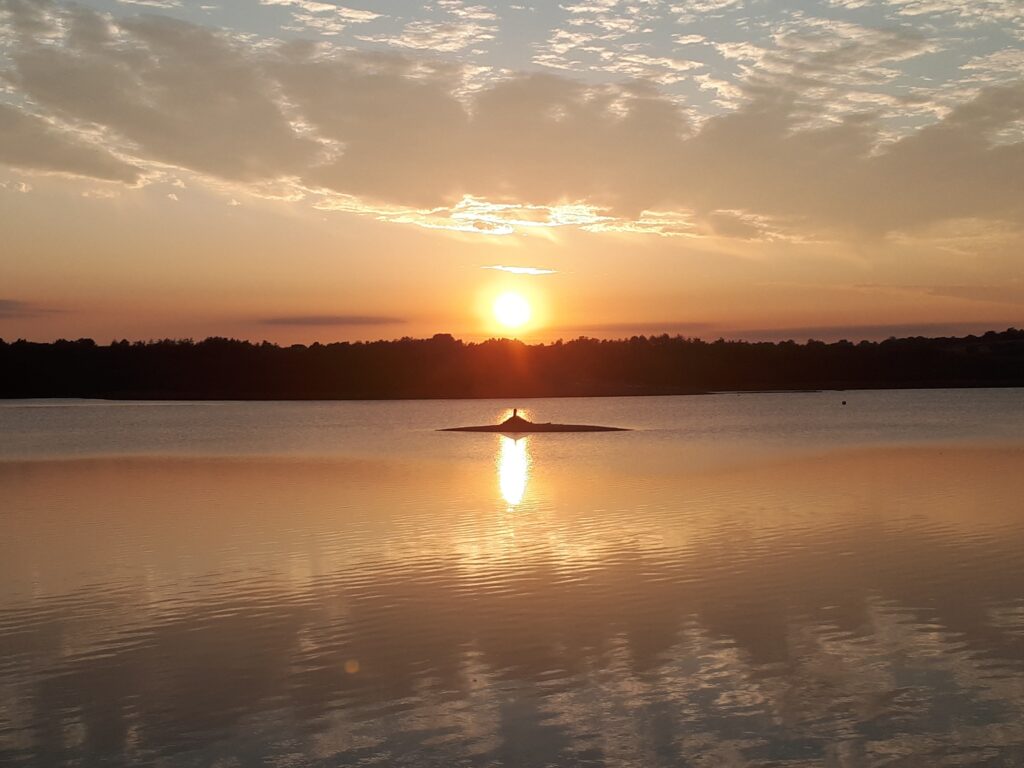
Earlier today, in the midst of Storm Antoni, I took this one of the same location:
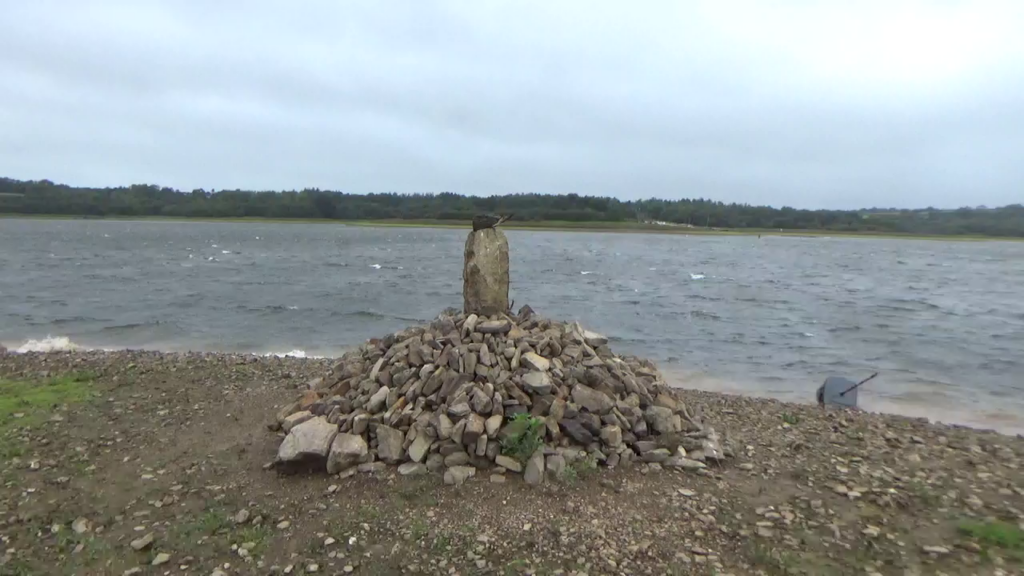
I’ve also been looking at South West Water’s graphs of the water level in their reservoirs for years now. Getting bang up to date, here are the most recent such graphs for Roadford Lake:
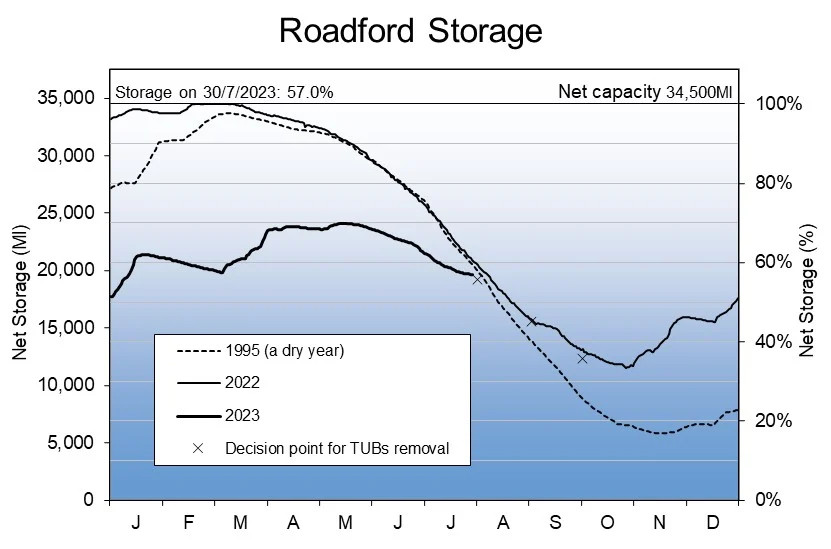
and Colliford Lake in Cornwall:
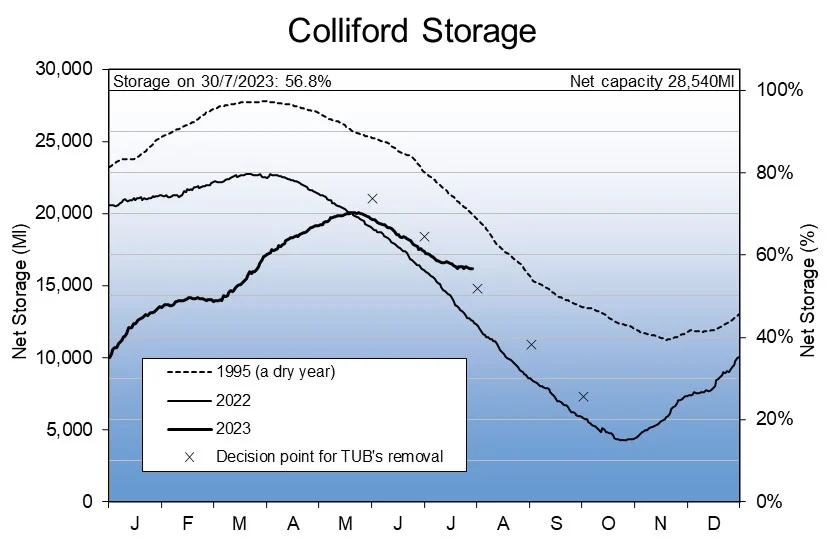
A casual glance at the graphs suggest that both reservoirs have recently risen above the August 1st cross marking a “Decision point for TUB’s removal”. TUB being the TLA for “Temporary Use Ban”, known colloquially as a “hosepipe ban”.
So will the long standing hosepipe bans in West Devon and/or Cornwall be lifted any day now? I asked South West Water that question, and received this reply:
It seems my initial query needs to be recast as “Will the TUB in the Colliford Water Resource Zone (WRZ for short) be lifted in a couple of weeks or so”? Presumably Roadford will be reassessed at the beginning of September.
A perusal of SWW’s 2022 “drought plan” reveals the following piece of information:

The first criterion has evidently been met, at Colliford at least. What about the others?
[Update – August 10th]Last weekend’s reservoir water levels have been released by South West Water. Here’s the graph for Roadford Lake:
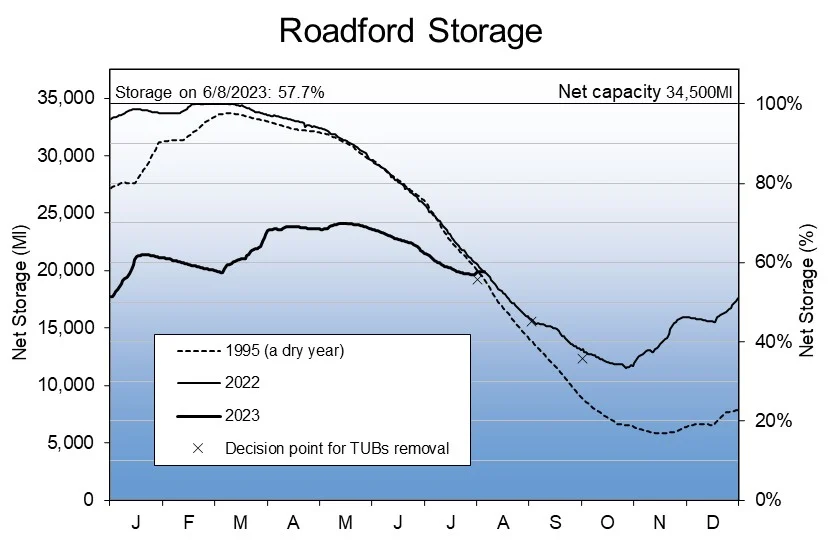
together with the data for Colliford Lake in Cornwall:
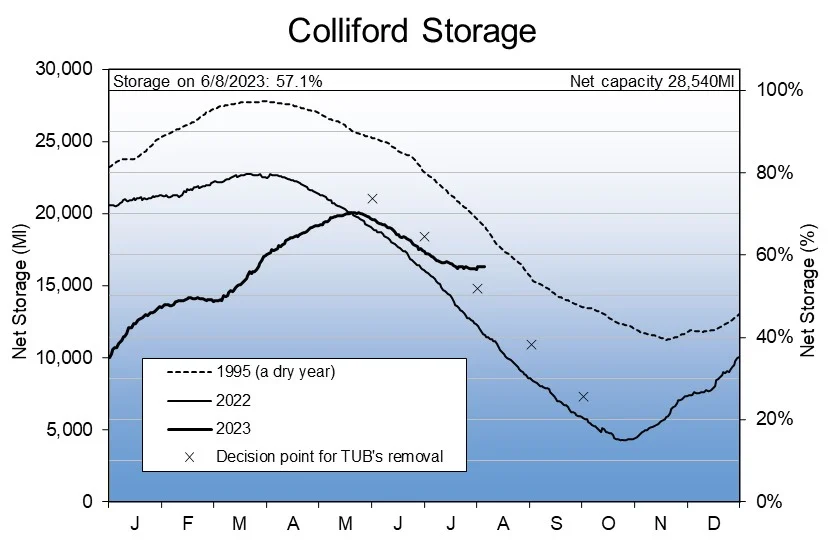
The water level in both reservoirs has increased over the last few days. Will this mean removal of the West Devon hosepipe ban sooner rather than later? Let’s look at the criteria in SWW’s table above. Here’s the data from this week’s Environment Agency weekly rainfall and river flow summary:
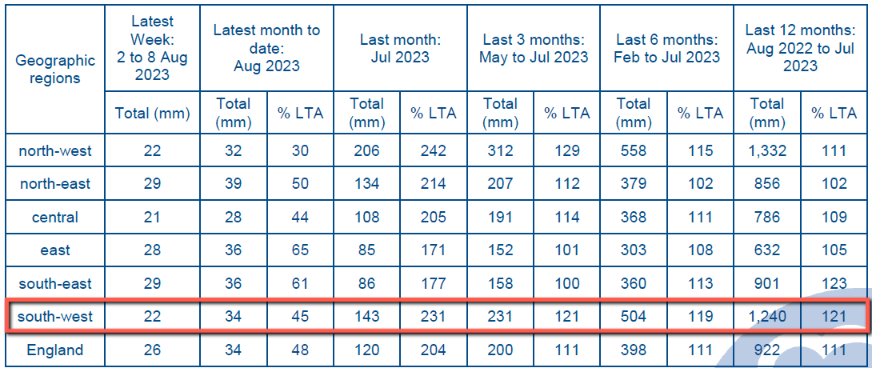
July was an extremely wet month in South West England, and the first week in August has been fairly damp too. Here’s the rainfall maps for the last two weeks:
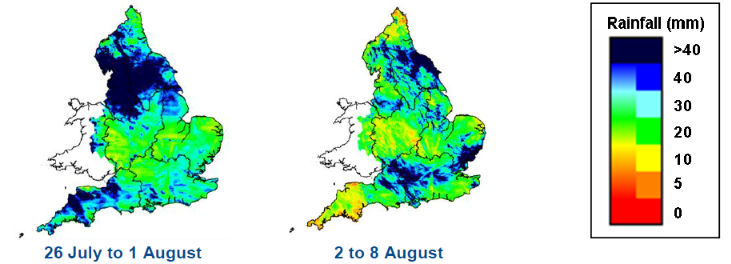
Moving down Table 7.1, river flows are also at or above normal levels across Cornwall and Devon:
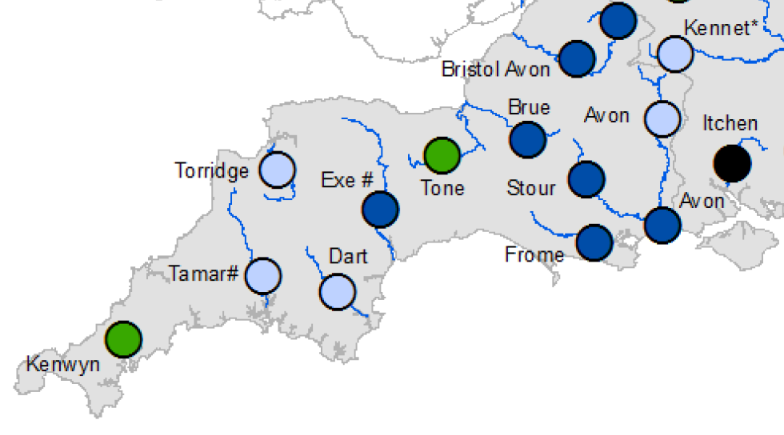
Groundwater is the next line down. Boreholes are not used in the Roadford WRZ, but in the Colliford WRZ the “groundwater fed lakes” at Park and Stannon are included in that category. South West Water don’t publish water levels for those reservoirs, but Stannon looked full to overflowing when viewed from a distance in May:
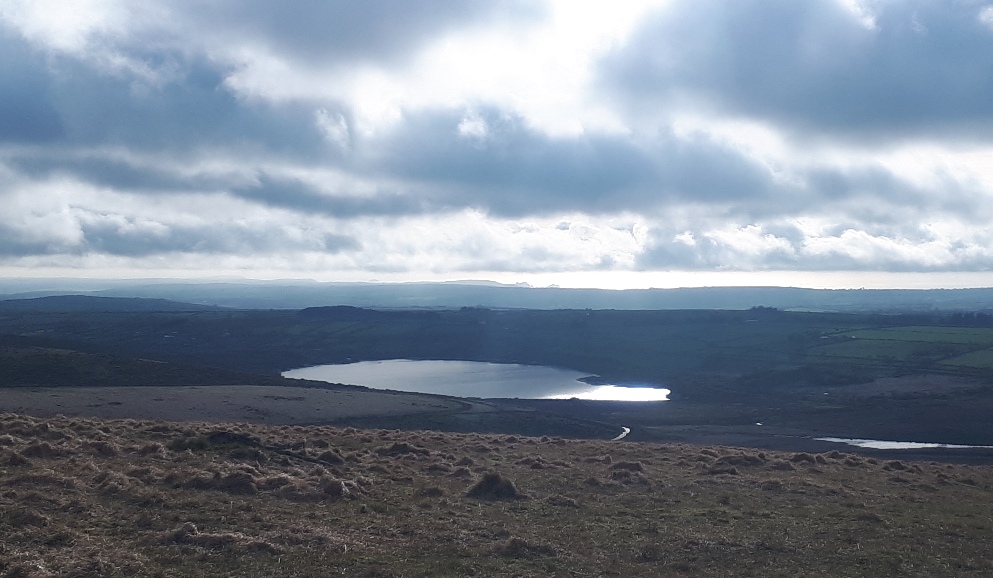
That leaves soil moisture. Here’s the European Drought Observatory’s “Combined Drought Indicator” map of SW England for the last 10 days of July:
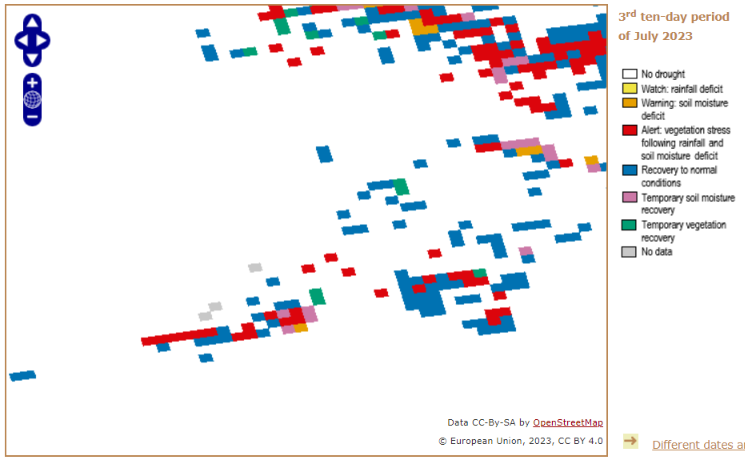
All in all I can see no reason why the hosepipe ban in the Colliford WRZ should not be lifted shortly, but I’m not an expert in such matters. I asked South West Water the obvious question, and this was their reply:
We are still awaiting the outcome of the review from our Drought team. Once an update is provided we will be updating all our customers. – Jonathan
— SouthWestWater Help (@SWWHelp) August 10, 2023
Hopefully they will make an announcement soon.
[Update – August 16th]Another week has passed, but there’s still been no announcement from South West Water regarding a possible end to the hosepipe ban. Despite the fact that the water level graphs for Roadford and Colliford Lakes now look like this:
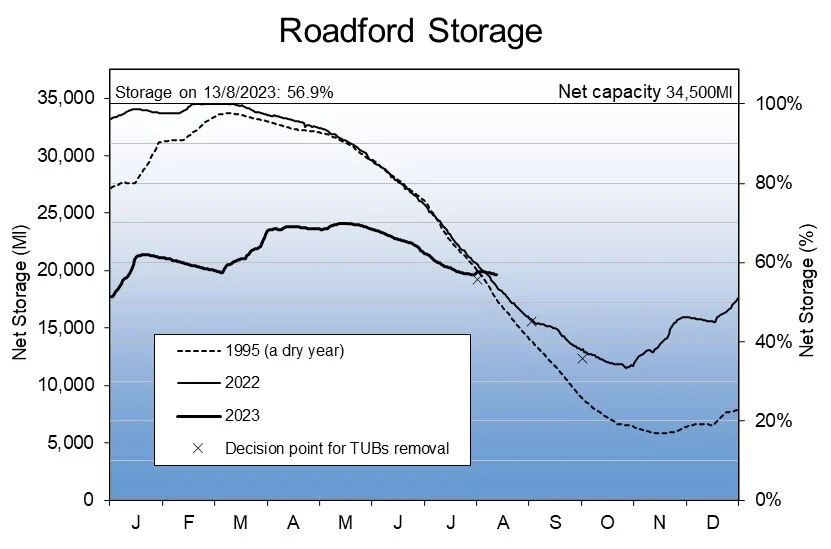
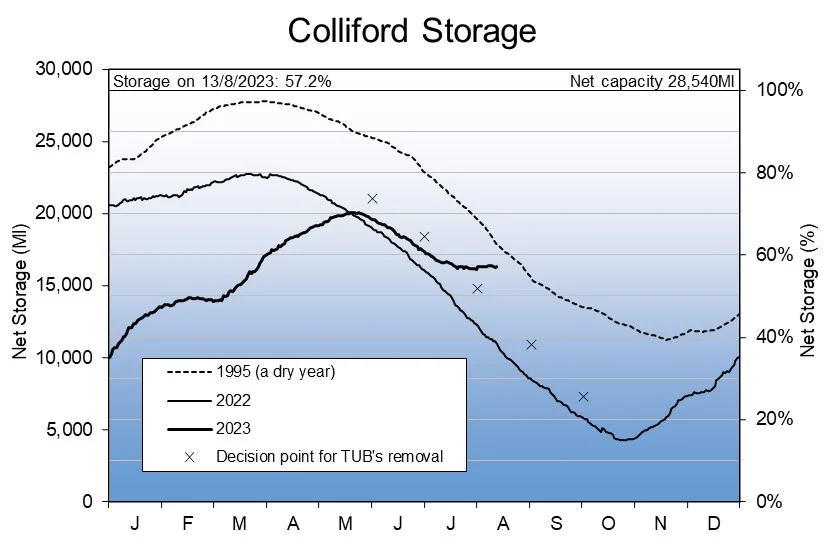
SWW’s summary of the situation still looks like this:
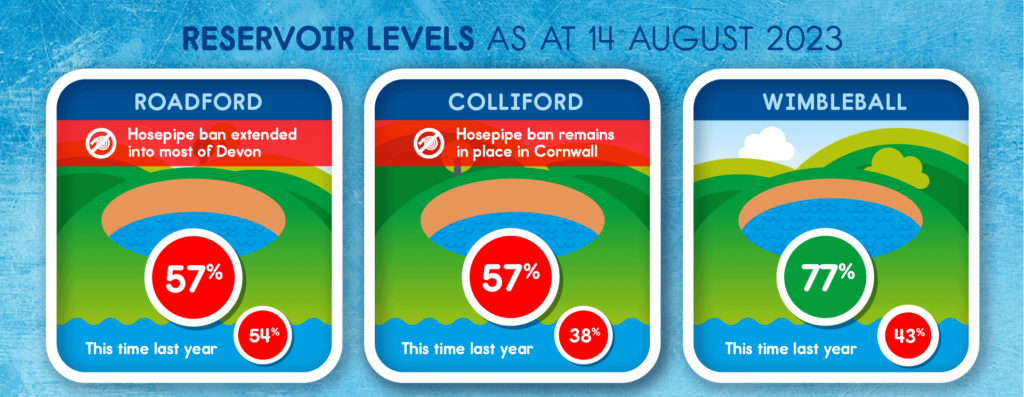
On my visit to Roadford Lake on Monday I recorded this image (amongst others):
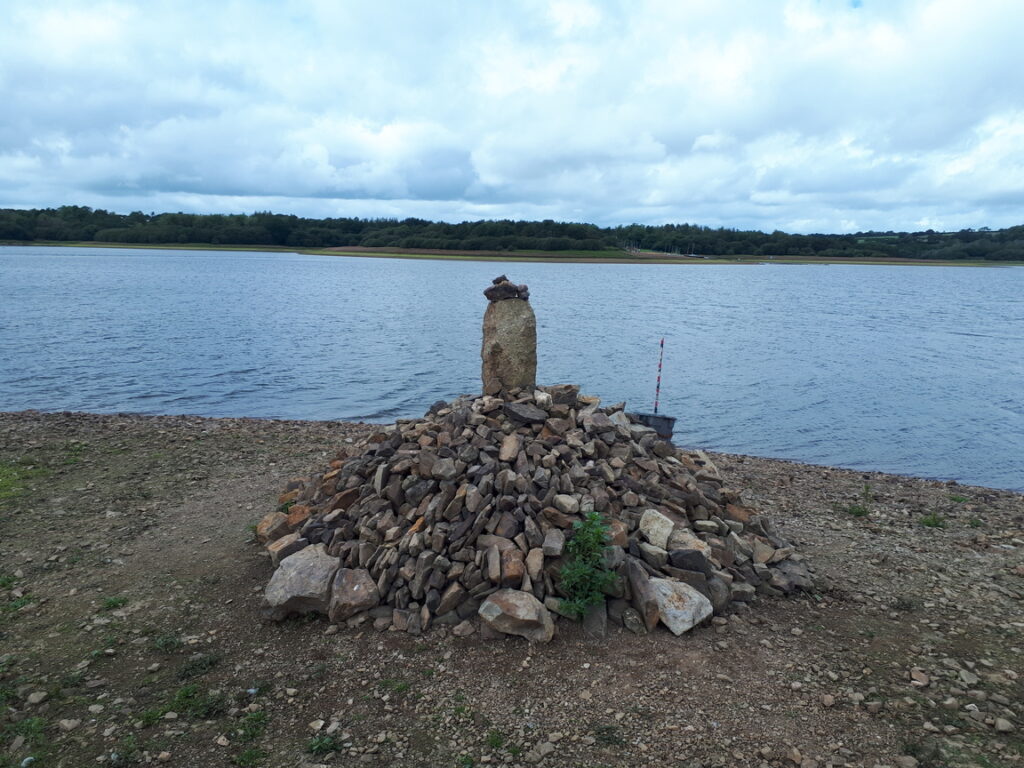
Yesterday South West Water announced at long last that:
We will lift the hosepipe restrictions in Cornwall and Upper Tamar on 25th September.
Today South West Water have updated their reservoir water level infographic:
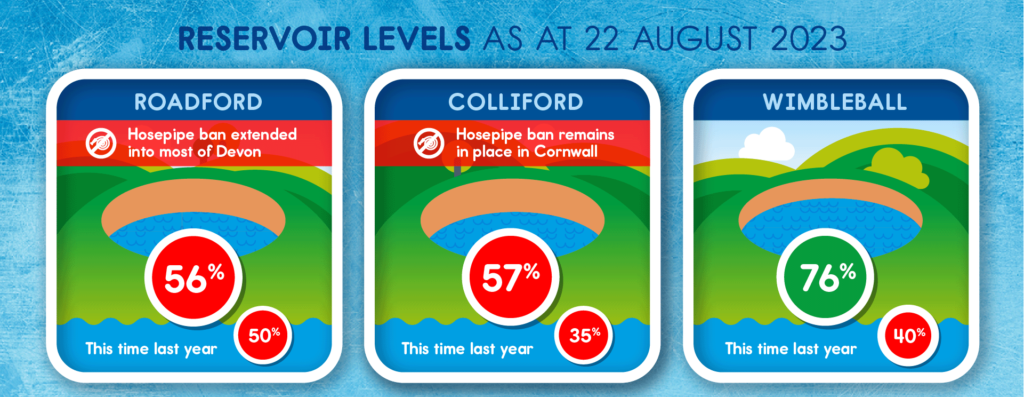
If you click on it it takes you to a page on their web site that still reads:
Save every drop
It’s more precious than you think
With most of our planet being blue, you wouldn’t be alone in thinking we’ll never run out of water. The thing is, not all that water is drinkable. In fact, only 1% of it is accessible freshwater. And we need to protect it.
That’s because whether it’s us, the fish that live in it, the cows that drink it, the otters that play in it, the bugs that skate on it, or the birds who bathe it in – life depends on water. And all creatures, great and small, rely on the same 1%. The more tap water you use, the less is left in the environment for them.
Another reason to save water is that all aspects of human life depend on it. You drink it. It’s used to make your food, your clothes, your house, your medicine. Things we take for granted like swimming pools and restaurants couldn’t run without it. Try putting out a fire without water. Or treating a wound. Or cleaning the bathroom.
With so much depending on it, it only makes sense to save every drop.
South West Water have also released another set of reservoir water level graphs. Here’s Roadford Lake on August 20th:
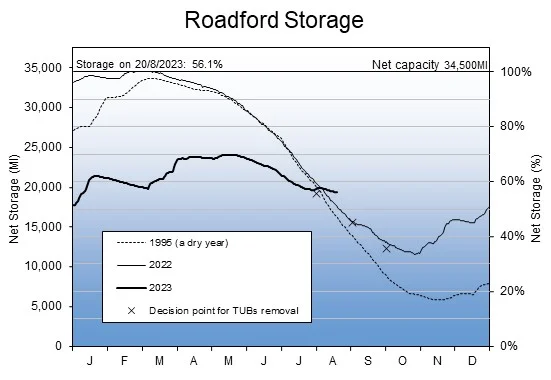
Plus Colliford Lake in Cornwall, where the current hosepipe ban will be lifted in just over a month:
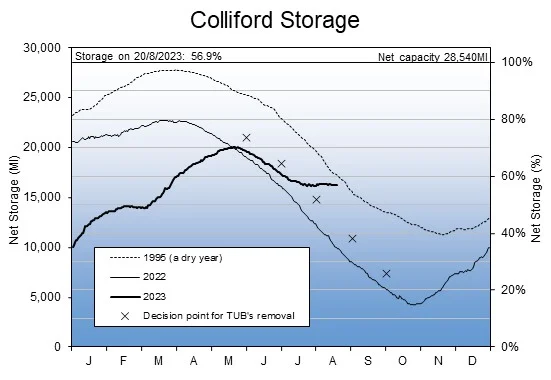
Having received this suggestion on Twitter today:
That would be because @SouthWestWater made the operational choice to keep 2Ml more in Burrator than in previous years, artificially depressing the Roadford level by 2Ml.
— jamesdatmse (@jamesdatmse) August 23, 2023
here for the first time is the water level graph for Burrator, the second biggest reservoir in the Roadford Water Resource Zone:
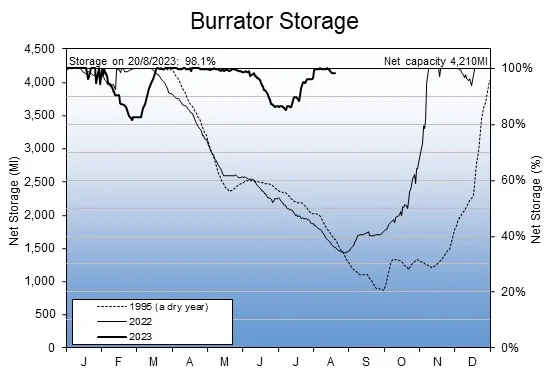
This year’s graph does indeed look very different to the two “dry years” also shown on the graph. However South West Water assure me via Twitter that:
We can use Burrator as as an alternative source to Roadford reservoir, but we can also use the Tavy and Tamar rivers as alternatives for both reservoirs.
As the river levels were higher this year, we’ve been able to utilise rivers more which has helped protect both Burrator and Roadford storage levels.
Amongst other things that confirms the EA’s analysis of river flows mentioned above, and leads me to wonder what volumes of water have been pumped where in South West Water’s Roadford Water Resource Zone over the last 18 months or so:
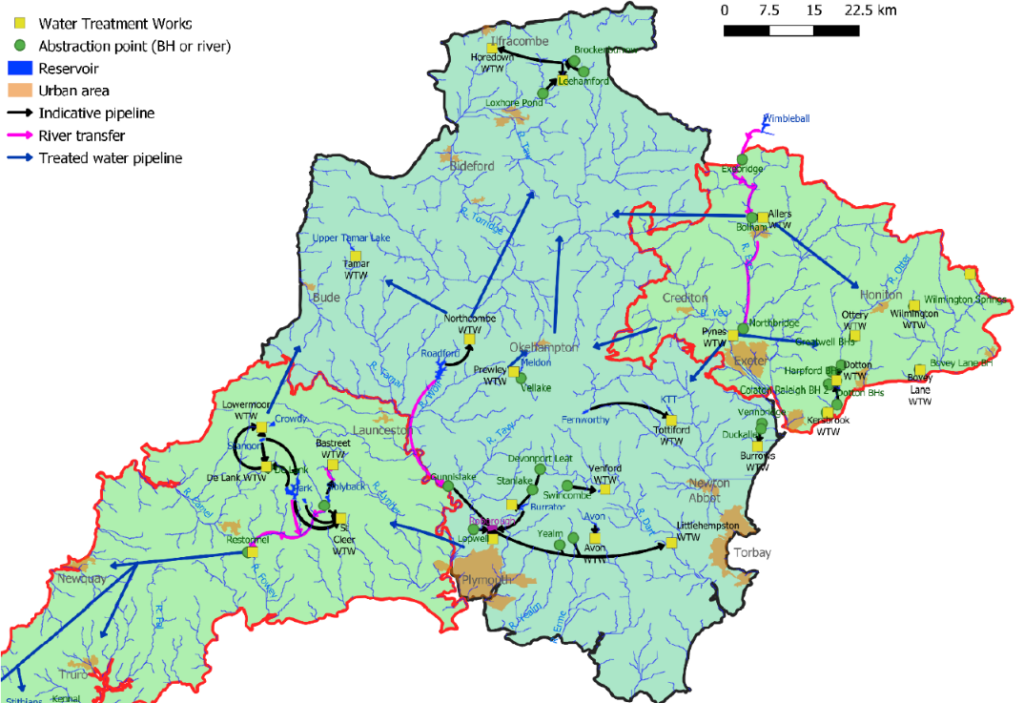
To be continued…
I asked South West Water Help on Twitter (again!) how their TUB review was proceeding. I wasn’t entirely happy with their answer:
With the first anniversary of the imposition of South West Water’s temporary use ban arriving later this week, we’ve taken an in depth look at the criteria they are using to decide whether to lift the ban:
“The South West Water Hosepipe Ban’s First Birthday“
Pingback: The 2023 Drought in South West England – Davidstow Parish Information